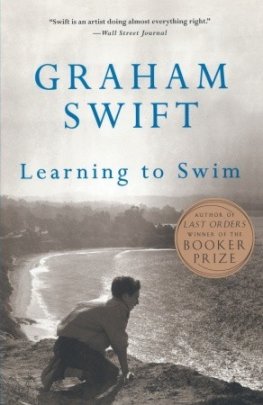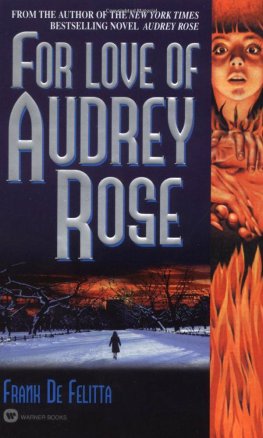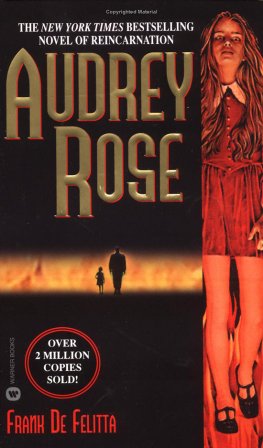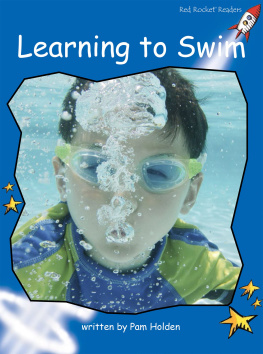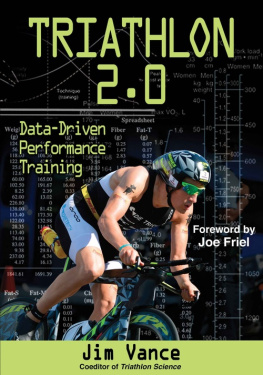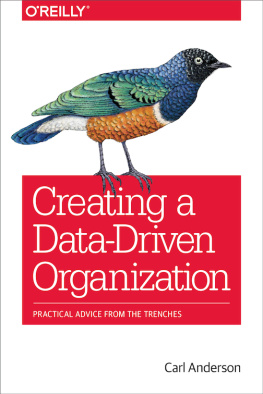Frank Rose - The Sea We Swim In: How Stories Work in a Data-Driven World
Here you can read online Frank Rose - The Sea We Swim In: How Stories Work in a Data-Driven World full text of the book (entire story) in english for free. Download pdf and epub, get meaning, cover and reviews about this ebook. year: 2021, publisher: W. W. Norton & Company, genre: Detective and thriller. Description of the work, (preface) as well as reviews are available. Best literature library LitArk.com created for fans of good reading and offers a wide selection of genres:
Romance novel
Science fiction
Adventure
Detective
Science
History
Home and family
Prose
Art
Politics
Computer
Non-fiction
Religion
Business
Children
Humor
Choose a favorite category and find really read worthwhile books. Enjoy immersion in the world of imagination, feel the emotions of the characters or learn something new for yourself, make an fascinating discovery.
- Book:The Sea We Swim In: How Stories Work in a Data-Driven World
- Author:
- Publisher:W. W. Norton & Company
- Genre:
- Year:2021
- Rating:3 / 5
- Favourites:Add to favourites
- Your mark:
- 60
- 1
- 2
- 3
- 4
- 5
The Sea We Swim In: How Stories Work in a Data-Driven World: summary, description and annotation
We offer to read an annotation, description, summary or preface (depends on what the author of the book "The Sea We Swim In: How Stories Work in a Data-Driven World" wrote himself). If you haven't found the necessary information about the book — write in the comments, we will try to find it.
Frank Rose: author's other books
Who wrote The Sea We Swim In: How Stories Work in a Data-Driven World? Find out the surname, the name of the author of the book and a list of all author's works by series.
The Sea We Swim In: How Stories Work in a Data-Driven World — read online for free the complete book (whole text) full work
Below is the text of the book, divided by pages. System saving the place of the last page read, allows you to conveniently read the book "The Sea We Swim In: How Stories Work in a Data-Driven World" online for free, without having to search again every time where you left off. Put a bookmark, and you can go to the page where you finished reading at any time.
Font size:
Interval:
Bookmark:
The Sea We Swim In
How Stories Work in a Data-Driven World
Frank Rose

In memory of Susan Kamil,
who loved great stories and the people who tell them
There are these two young fish swimming along and they happen to meet an older fish swimming the other way, who nods at them and says Morning, boys. Hows the water? And the two young fish swim on for a bit, and then eventually one of them looks over at the other and goes, What the hell is water?
David Foster Wallace, This Is Water
We live in a sea of stories, and like the fish who (according to the proverb) will be the last to discover water, we have our own difficulties grasping what it is like to swim in stories.
Jerome Bruner, The Culture of Education
Contents
I GREW UP IN A DIFFERENT TIME . It was the mid-1960s when I was in high school, on the outskirts of a small city in Virginia. Our house was out in the country, on a hill above the valley where the Blue Ridge Mountains meet the Alleghenies. I was an only child. Sometimes at night I would go outside and gaze over the woods and pastures at the city down below. It was a railroad town, home base of the Norfolk & Western, the line that brought coal down from the Appalachian mining camps and hauled it on to the sea. You could see a lot of lights down there, streetlights, store lights, house lights, electric evidence of human activity. And though I couldnt see them or feel them, I was also acutely aware of the signals that were flying through the airradio waves from the citys two television stations, carrying information from other cities far beyond my view.
I knew then that I wanted to be where the signals come from, not where the signals go to. So I did the only thing I could think of to get started: I volunteered for the school paper. I was painfully shy back then, and I figured if nothing else it would give me an excuse to talk to people.
Today, of course, the signals come from everywhere. They are as ubiquitous as the lights outside my lower Manhattan apartment. Social media are there even for people who never wrote for the school paper. But more than that, the idea that you would sit back and passively consume an article or a television show now seems quaint. Digital technology changes the way we tell stories and the way we respond to them. It allows for an interplay between author and audience that didnt exist in mass media. It blurs the line that made most of us passive receptors for more than a century.
That was the subject of my last book, The Art of Immersion , published just as these changes were coming into focus. As a journalist for Wired reporting on media in the early 2000s, I could sense something happening. The first real tip-off came when I was interviewing James Cameron for a story on 3-D. We were on a soundstage at Mels Cit du Cinma in Montreal, where Cameron was on hand for the shoot of Eric Brevigs Journey to the Center of the Earth , the first feature film to be made with Camerons newly invented stereoscopic camera system. When I asked about Avatar , which had been in development for years but had yet to be green-lit, he described it as an Edgar Rice Burroughstype manly adventure film that would exist not only on the big screen but in other formsforms that would let you delve deeper and deeper into the story and its world. Avatar , he said, would be the kind of fantasy that as a geek fan you can hurl yourself into. I think the role of this type of film should be to create a kind of fractal-like complexity. The casual viewer can enjoy it without having to drill down to the secondary and tertiary levels of detail. But for a real fan, you go in an order of magnitude and, boom! Theres a whole set of new patterns.
This brief quote, this notion of going ever deeper, changed the way I thought about everything I was writing about. But just as I couldnt have written The Art of Immersion without my experience at Wired , I couldnt have written this book without the past few years at Columbia University. In 2014, when I came to Columbia at the invitation of David K. Park, dean of strategic initiatives at the time, and Ira Deutchman, the independent film producer and then-chair of the School of the Arts film program, I was able to continue my study of digital media in an academic environment rather than a journalistic one.
A couple of fortuitous things soon happened. First, I partnered with Paul Woolmington, one of the most forward-thinking people in advertising, to create an executive education program in storytelling for people who need to know how stories work but arent professional storytellers themselvesmarketing executives, for instance. And I joined Lance Weilers Digital Storytelling Lab, where with Lances support I launched an awards program that would scrap the whole idea of categoriesfilm, television, advertising, books, what have youand honor the most innovative efforts in storytelling in any medium. Digital technology erases distinctions, so why try to hang on to them? Thats the idea behind Columbias Digital Dozen: Breakthroughs in Storytelling awards, our annual list of the 12 most inventive digitally enabled stories from the previous year. Its also the idea behind this book. Its why, as you read, youll find yourself moving from movies to television to marketing to live performance to journalism and books and back again.
Meanwhile, the executive education program has evolved from the one-day seminar I led with Paul to a more ambitious effort Ive run on my own since Paul returned to advertising in 2016. We call it Strategic Storytelling because its about how to tell stories that are strategicthat are designed to achieve a goal that is long-term and fundamental, as opposed to short-term, immediate, and tactical.
Tactical stories are important, sometimes critical. They are what you need when one of your oil-drilling platforms in the Gulf of Mexico explodes, killing nearly a dozen workers and injuring even more, and the subsequent oil spill fouls 1,300 miles of coastline. But thats also when you want to have a strategic story or two to fall back on. Maybe your organization has a wonderful heritage that speaks of trust built up over decades. Or better yet, maybe you have a sterling safety record and employees who have spoken volubly and unprompted about your efforts to keep this sort of accident from happening. No? Quite the opposite? And then your CEO gets tired and flustered and blurts out Id like my life back in a television interview?
Thats unfortunatefor your company, for the firms management, for investors. Its why you need to have a storytelling strategy long before the oil well blows.
I READ AN ARTICLE in The New Yorker a while back in which the writer started to wax on about the Greek philosophers. Appetites we share with animals, he wrote, summarizing Socrates; reason is what makes us human. Well, sure. Reason, to the extent that we employ it, does appear to be uniquely human. But so are stories.
Manlet me offer you a definitionis the story-telling animal, Graham Swift wrote in Waterland , his meta-novel about a history teacher whose students are bored with history. Wherever he goes he wants to leave behind not a chaotic wake, not an empty space, but the comforting marker-buoys and trail-signs of stories.... As long as theres a story, its all right.
Two things are going on here. One is the assertion that stories give us patternsthey comfort us by helping us make order out of chaos. The other has to do with that word animal. Storytelling may be unique to humansits difficult, though hardly impossible, to tell stories without languagebut stories are a product of our animal instincts. They have little to do with reason and everything to do with emotion. Reason has always been an aspirational goal. When humans lived more like other animalsarchitecture and language and religion, yes, but no electricity, no air conditioning, no jet travel, no germ theory, no anesthesia, no indoor plumbing, no flush toilets, horses to take us places, shit everywherethose who could afford to took great pains to raise themselves above the barnyard. Reason did the trick; so did exquisite clothing in satin and lace, which cost more in pecuniary terms but far less in mental effort. Now we exist by the billions in 24-hour high-tech cocoons wearingyoung or old, rich or poorsome combination of worn jeans, T-shirts, and designer sneakers. We dont have to worry about what separates us from the animals because the iPhone makes it obvious. We can finally relaxmaybe not completely, but at least enough to think about whats going on with stories.
Next pageFont size:
Interval:
Bookmark:
Similar books «The Sea We Swim In: How Stories Work in a Data-Driven World»
Look at similar books to The Sea We Swim In: How Stories Work in a Data-Driven World. We have selected literature similar in name and meaning in the hope of providing readers with more options to find new, interesting, not yet read works.
Discussion, reviews of the book The Sea We Swim In: How Stories Work in a Data-Driven World and just readers' own opinions. Leave your comments, write what you think about the work, its meaning or the main characters. Specify what exactly you liked and what you didn't like, and why you think so.

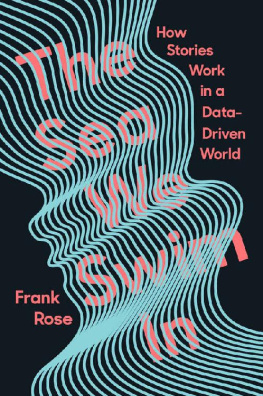
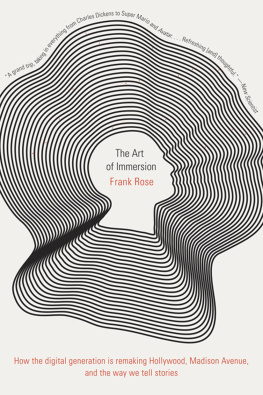
![Margaret Millar - Rose's Last Summer [= The Lively Corpse]](/uploads/posts/book/899392/thumbs/margaret-millar-rose-s-last-summer-the-lively.jpg)
